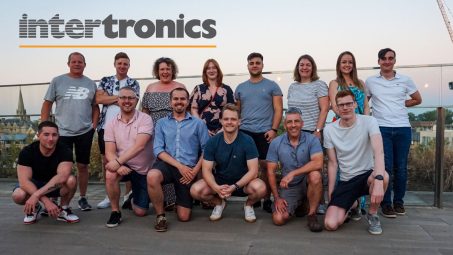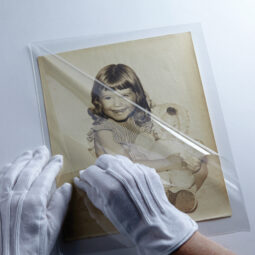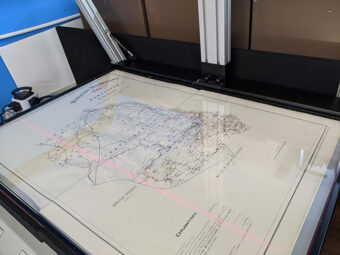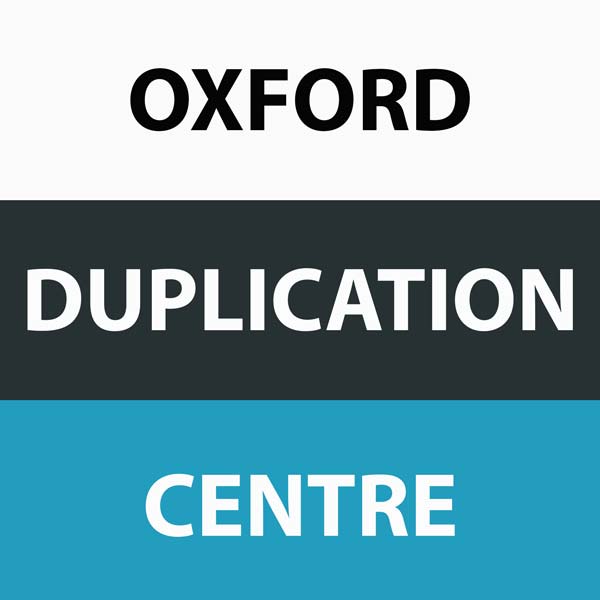
Scanning Archival Photographic Images – Community Heritage Projects
Scanning Archival Photographic Images – Community Heritage Projects Our archive department has been busy working on Oxford United Football Club’s archive of photographs. Oxford United started in 1893 as an amateur club called Headington, a village team known locally as “the boys from over the hill”, so it was an honour to support the club […]
Scanning Archival Photographic Images – Community Heritage Projects
Our archive department has been busy working on Oxford United Football Club’s archive of photographs. Oxford United started in 1893 as an amateur club called Headington, a village team known locally as “the boys from over the hill”, so it was an honour to support the club with their incredible archive of photographs dating back to the early 50’s.
Handling and Cleaning Photographs
Before we scan the photos, we discussed with the head archivist at Oxford United Football Club, to consider the way in which the files will be organised for future archival retrieval. Indexing can be prepared, either by date, event, image size and how the files will be names. The list is endless and suited to our clients requirements. Once we have discussed the ‘house management’, our archive team then start the pre-preparation of digitising.
First, our archive team ensures to carefully handle the photographic historical items by their edges to avoid damage from fingerprints. Fingerprints are a significant threat to photographic materials and can be very difficult to correct. Fingerprints may not manifest in photographic materials until long after the actual incident of touching the surface.
Secondly, air blowers are used to remove dust and a lint-free wipe or cloth to clean the scanning beds before digitising. It is essential our archive technicians wear cotton or latex gloves when handling historical items. Dust on historical items and scanning beds can significantly reduce the quality of an archival image. Dust is most noticeable on small items that are greatly enlarged. Dust is inevitable and can be reduced but not eliminated.
Thirdly, we digitise the archive to ensure it is future-proof. This involves digitising to The National Archive Standards. The standards ensure the imagery is converted in the highest capture, digitising fine details and preservation are at the forefront of scanning. Once the Standards output is made, we can then prepare smaller digital images suitable for viewing and uploading to websites and platforms.
There are many corporations and heritage companies which hold archives of valuable photograph albums and loose photographs, each containing important historical memories that span generations. It must be noted, however, even the most well-kept archives will fade over time – and that’s why so many companies are looking to our company to digitise their old photograph and album collections. If we can support you, please do contact myself cheryl@oxfordduplicationcentre.com or call 01865 457000 to discuss your project.
Kind regards
Cheryl – Director
https://oxfordduplicationcentre.com/heritage-document-imagery-digitisation.html
OUFC HISTORY
https://www.oufc.co.uk/club/history/
Oxford United started in 1893 as an amateur club called Headington, a village team known locally as “the boys from over the hill”.
In 1911 Headington merged with neighbours Headington Quarry, the new club going under the name Headington United. The club moved from Junior to Senior football in 1921, joining the Oxfordshire Senior League.
After the Second World War United were still a tiny set up, joining in the Spartan League in 1947. But in 1949 the club was elected to the Southern League and became a semi-professional unit.
Harry Thompson was appointed manager and set about the task of transforming United into one of non-league’s major forces.
Only a handful of Football League clubs had installed floodlights when Headington United proudly used theirs for the first time in December 1950 with a friendly against local side Banbury Spencer.By 1953 the side won the first of its Southern League Championships and in 1954 reached the Fourth Round of the FA Cup beating League clubs Millwall and Stockport County before losing 4-2 to Bolton Wanderers.
Ambitious ground improvements were undertaken at The Manor, with one of the most modern stands in the land for that era – The Beech Road Stand – being erected in anticipation of the day when League football would be seen at the ground.
The appointment of the former Birmingham City manager Arthur Turner as manager in January 1959 was another turning point in the club’s history. And in 1960, to appeal to the whole city and increase national recognition, the club’s name was changed to Oxford United.
Turner guided United to two more Southern League titles and when Accrington Stanley folded in 1962, Oxford United was elected to the Fourth Division of the Football League.
More in Business Services

Reliable Vehicle Servicing and Repairs with Pete Thirtle
When it comes to maintaining and repairing your vehicle, trust and expertise are paramount. That’s why Pete Thirtle Vehicle Services stands out as one of the go-to independent garage for drivers in Bicester, Oxford, and the surrounding areas. With a reputation built on honesty, reliability, and top-tier service, Pete can ensure that your vehicle receives the best care possible. B4’s CEO, Richard Rosser, shines the spotlight on the ultra-reliable, Pete Thirtle.

Catering laundry solutions for spotless table linens by Freya Gutteridge, Oxwash
In the catering industry, pristine table linens are essential for enhancing both presentation and hygiene. Crisp, spotless linens create a professional atmosphere and ensure a safe dining environment for guests. Effective laundry solutions, such as the use of biodegradable detergents and advanced washing techniques, help maintain fabric quality and remove tough stains without harming the environment.

Intertronics: Driving Innovation in Adhesives and Assembly Solutions
For over four decades, Intertronics has been at the forefront of providing high-performance adhesives, coatings, sealants, and application equipment to industries that demand precision and reliability. From electronics and medical devices to automotive and aerospace, Intertronics’ expertise ensures that manufacturers can optimise their bonding and assembly processes with cutting-edge solutions.
From this author

Do You Have Paperbased Records – Its Time to Protect Those...
A very important reason to archive your documents and archives is to avoid losing data. All documents are vulnerable to being destroyed, deleted, natural disaster, such as a flood or fire. A more serious reason for document archiving is deterioration of the papertypes. I cannot count the number of times we have experienced paper […]

Maps, Plans & Posters | Oversized Scanning Solutions
Our services at Oxford Duplication Centre offer oversize scanning solutions for maps, plans and posters of any document type, from parchment, linen, cotton and paper. Our archive technicians have extensive experience in digitising complex document types into high quality digital files, ideal for archival purposes, viewing and uploading. Output formats are straightforward offering any type […]

Why You Should Consider Your Documents And Have Them Digitally Preserved.
Digitising paper documents into secure & accessible electronic records. Our services at Oxford Duplication Centre offer a complete range of document scanning solutions to digitise archives of existing records. We can handle any type of document, from student records to complex technical drawings, from a single file through to entire archives. Our services digitise upto […]


